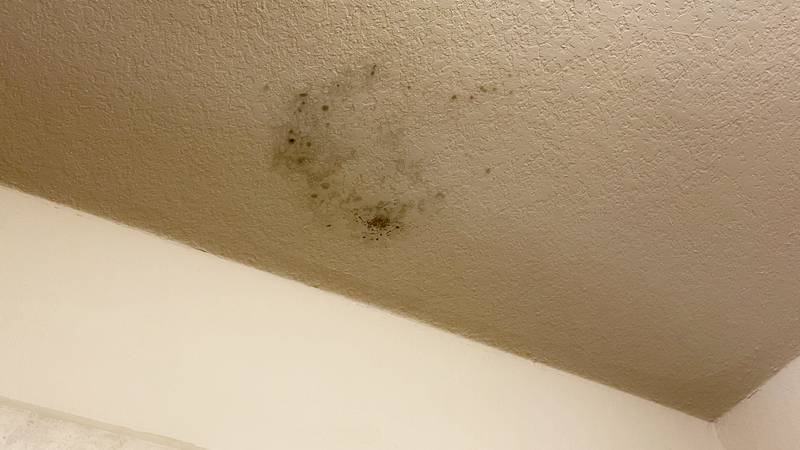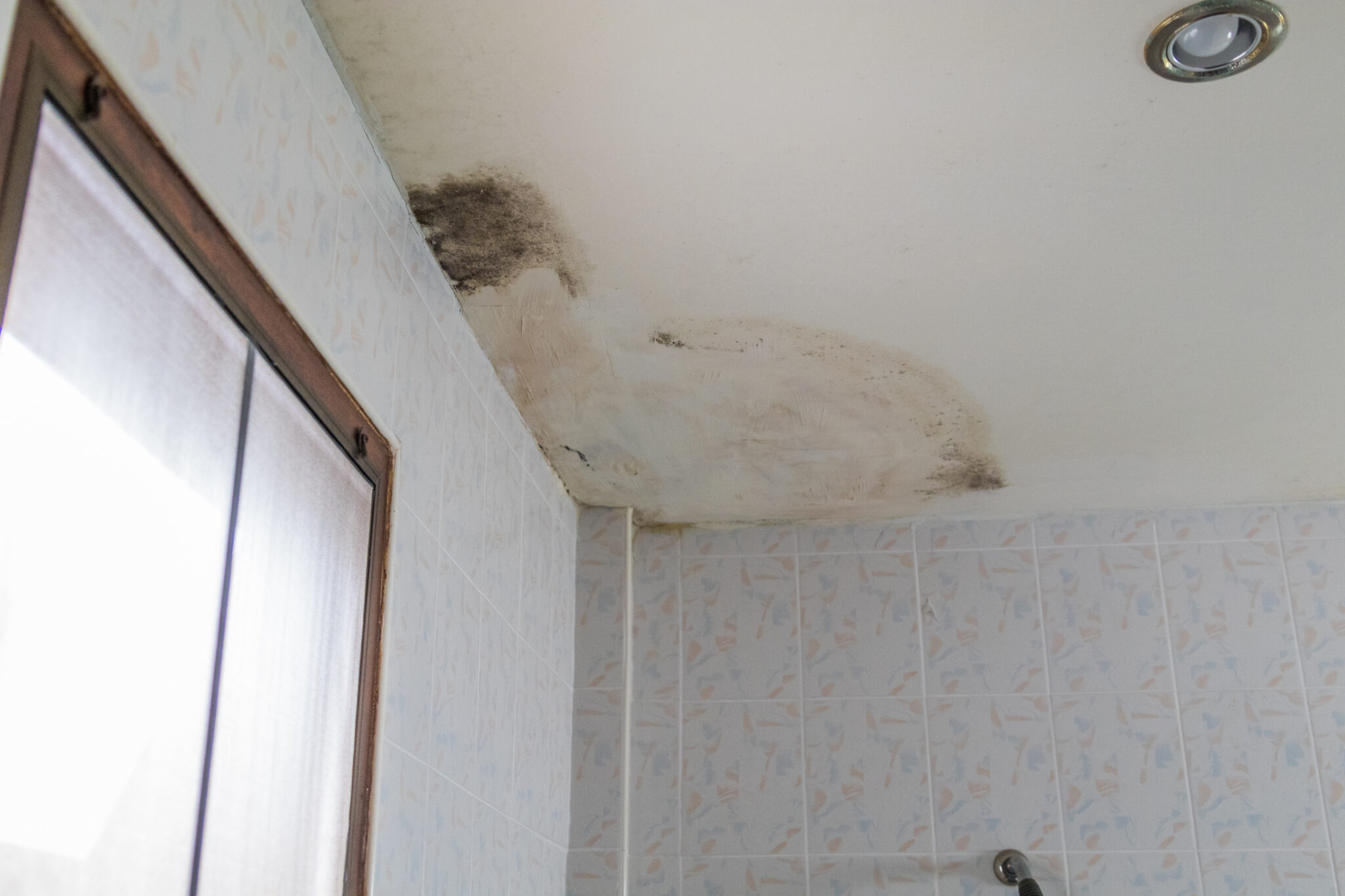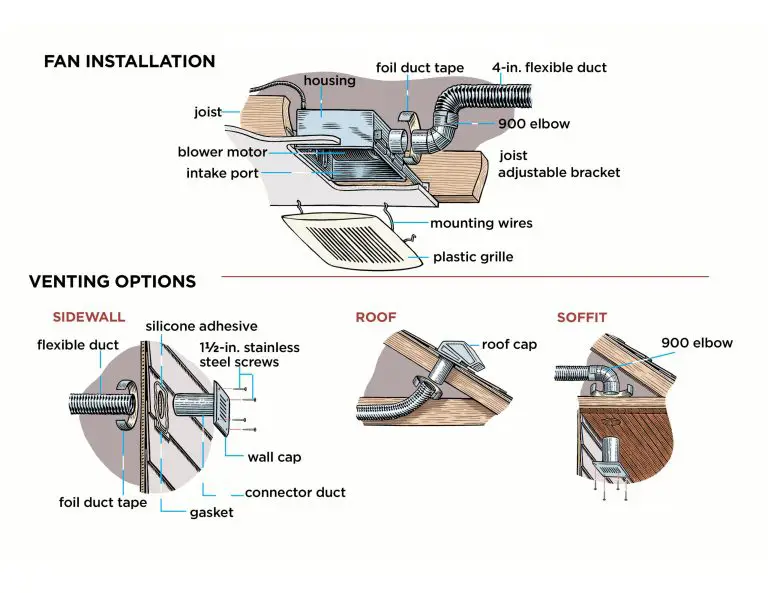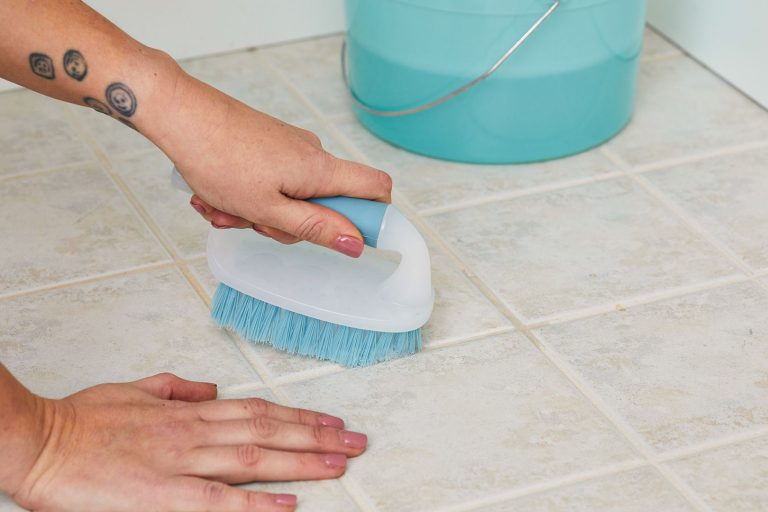Bathroom Ceiling Mold
Bathroom ceiling mold is a type of fungi that can form on bathroom ceilings due to high humidity levels or water leakage. It is a type of indoor air pollution and can cause respiratory issues, allergic reactions, and other health problems. Bathroom ceiling mold can be hazardous if not removed correctly, and it is important to take the necessary steps to identify and remove the mold. This includes inspecting the ceiling for signs of mold, using appropriate cleaning products, and addressing the source of the moisture. If done properly, bathroom ceiling mold can be prevented and removed.
Causes of Bathroom Ceiling Mold
Bathroom ceiling mold can be a major cause of concern for homeowners. It is important to understand the causes of bathroom ceiling mold so that you can take the necessary steps to prevent it from growing and spreading. Mold can cause a variety of health problems, so it is essential to take the proper precautions to keep it away.
The most common cause of bathroom ceiling mold is poor ventilation. When the humidity in the bathroom is too high, it can lead to the growth of mold on the ceiling. Poorly ventilated bathrooms are much more likely to experience mold growth than those with adequate ventilation. Additionally, bathrooms that are not properly cleaned and maintained can also be prone to mold growth.
Another cause of bathroom ceiling mold is leaking pipes or plumbing fixtures. The moisture from the leak can accumulate on the ceiling and provide a perfect environment for mold to grow. If you suspect that a leak is causing your mold problem, it is important to address the issue immediately.
Finally, improper insulation can also be a cause of bathroom ceiling mold. If the insulation in your bathroom is not properly installed, it can allow warm, moist air to escape, creating ideal conditions for mold growth.
Symptoms of Bathroom Ceiling Mold
Bathroom ceiling mold can be a major health hazard. It can cause a host of medical problems, including asthma, allergies, and even chronic sinus infections. Unfortunately, many people don’t realize they have a mold problem until the mold begins to cause symptoms. Knowing the common signs of bathroom ceiling mold can help you identify the issue and take the necessary steps to remediate it.
Some of the most common signs of bathroom ceiling mold are coughing, sneezing, itchy eyes, and a runny nose. If you find yourself experiencing these symptoms, it may be a sign of a mold problem. In addition, if you notice a musty odor, this could also be a sign of mold growth. In some cases, you may even be able to see the mold growth on the ceiling.
Bathroom ceiling mold can be a serious issue and should not be taken lightly. If you suspect you have a mold problem, it’s important to call a professional to inspect the area. The expert can inspect the area and determine the best course of action. This will help ensure your health and safety, as well as prevent further damage to your home.
Prevention of Bathroom Ceiling Mold
Mildew and mold growth can be a common problem in bathrooms, due to the warm, humid environment. Ceiling mold is especially troublesome since it can cause a variety of health and maintenance issues. Fortunately, there are several steps that homeowners can take to prevent and control bathroom ceiling mold.
To begin, it is important to ensure that the bathroom is properly ventilated. Leaving the fan on after showers and baths, and opening a window when possible, can help reduce the amount of moisture in the air. If the bathroom has an exhaust fan, it should be used regularly to keep the air moving.
In addition to proper ventilation, homeowners should ensure that the bathtub and shower are regularly cleaned and dried. Wiping down the walls and other surfaces after every use can also help prevent mold growth. For extra protection, mildew-resistant paint can be used when repainting the bathroom.
Finally, any water leaks should be addressed immediately. A small leak can quickly become a large problem if it is not taken care of right away. If any water is present on the ceiling, it should be wiped up and the area should be checked for signs of damage.
Cleaning and Removing Bathroom Ceiling Mold
Mold in the bathroom ceiling can be an unpleasant and unsightly problem. It’s also a health hazard if left untreated. The key to effective mold removal is to identify the source of the moisture and then take the necessary steps to remove the mold and fix the underlying issue. This article provides an in-depth look at how to tackle bathroom ceiling mold.
First, it’s important to identify the source of the moisture that’s causing the mold. This could be caused by condensation, plumbing leaks, or a lack of ventilation. Once the source is identified, it’s important to take the necessary steps to fix it. This could involve repairing any plumbing leaks, improving ventilation, or using a dehumidifier to reduce the moisture in the air.
Next, it’s important to thoroughly clean the area affected by the mold. This involves scrubbing the ceiling using a non-abrasive cleaning solution. Make sure to wear protective gloves and a face mask when cleaning, as mold can be hazardous to your health.
Finally, it’s important to apply a mold-resistant coating to the ceiling after it has been cleaned. This will help to prevent the mold from returning.

Health Risks of Bathroom Ceiling Mold
Mold spores are naturally occurring and can be found in many areas of the home, but the bathroom is one of the most prone to developing ceiling mold. Not only can this dangerous fungus cause significant damage to the structure of your home, but it can also lead to several health risks. In this article, we will break down the potential health risks associated with bathroom ceiling mold and provide advice on how to prevent its growth.
Breathing in mold spores can cause respiratory issues, such as coughing, sneezing, and asthma attacks. Long-term exposure can lead to serious health conditions, such as allergies, asthma, and even cancer. In addition, individuals with weakened immune systems are at an increased risk of developing infections or other illnesses after mold exposure.
In the bathroom, mold can grow on surfaces that are frequently exposed to moisture, such as walls, ceilings, and floors. It’s important to promptly address any signs of ceiling mold to prevent it from spreading and causing further health risks. If you notice any discoloration or spotting on the ceiling, it’s best to contact a professional to assess and address the issue.
Cleaning and removing mold on your own is not recommended as it can cause further health risks due to the inhalation of spores. Mold remediation services should be utilized to safely and effectively clean the affected area and ensure that the mold does not return.
Treating Bathroom Ceiling Mold
Bathroom ceiling mold can be an unsightly, smelly, and hazardous problem. It’s important to act quickly and properly to treat mold before it becomes a bigger problem. Fortunately, there are several steps you can take to deal with bathroom ceiling mold effectively.
First, it’s important to identify the source of the mold. Dampness, humidity, and lack of ventilation are common causes of bathroom ceiling mold. In some cases, a leaking roof, pipe, or window can be the source of the moisture. Once the source of the moisture is identified, it should be addressed immediately.
The next step is to clean the affected area. This can be done with a mixture of bleach and water, or a commercial mold cleaner. It’s important to follow the directions on the label. After cleaning, you can use a mildew inhibitor to help prevent the mold from returning.
Finally, it’s important to make sure the bathroom is properly ventilated. This can be done by opening windows or installing an exhaust fan. If the bathroom does not have an exhaust fan, adding one is a great way to reduce moisture.
Long-Term Solutions for Bathroom Ceiling Mold
Bathroom ceiling mold is a common issue that can be both annoying and hazardous to your health. It is important to identify and treat the problem before it escalates and causes more serious health issues. Long-term solutions for bathroom ceiling mold require a combination of strategies to prevent and control the growth of mold. This includes proper ventilation, regular cleaning, and using anti-mold products. Additionally, proper insulation and air sealing can also help reduce the risk of developing mold in the future.
Good ventilation is key to preventing bathroom ceiling mold. To ensure proper ventilation, the bathroom should be well-ventilated with an exhaust fan. This will help to keep humidity levels low and reduce the risk of mold growth. Additionally, regular cleaning and maintenance of the bathroom is also important to ensure mold does not build up. This includes wiping down surfaces with an anti-mold solution, such as bleach or hydrogen peroxide, to reduce the risk of mold growth.
Insulation and air sealing can also help to reduce the risk of developing mold in the future. By using insulation materials, such as foamboard, you can keep the area dry and reduce humidity levels. Air sealing can also help to keep the bathroom dry, as it can help to prevent moisture from entering the area and causing mold growth.
FAQs About the Bathroom Ceiling Mold
1. What causes mold to form on bathroom ceilings?
Mold growth on bathroom ceilings is most often caused by high humidity levels in the bathroom, caused by improper ventilation or inadequate insulation.
2. How do I remove mold from my bathroom ceiling?
Mold on bathroom ceilings can be removed by using a cleaning solution of one part bleach to three parts water and applying it to the affected area. Scrubbing the area with a scrub brush and then rinsing with water will help remove the mold.
3. Are there any preventative measures I can take to reduce mold growth in my bathroom?
Yes, there are several preventative measures you can take to reduce mold growth in your bathroom. These include installing a dehumidifier, using exhaust fans during showers, and ensuring that any leaks or water damage are addressed quickly.
Conclusion
Bathroom ceiling mold can be a serious problem that should not be overlooked. If the mold is left untreated, it can cause serious health risks for those living in the home, and it can also cause significant damage to the structure of the home. It is important to take quick action to identify and remove the mold before it spreads and causes further damage. Professional assistance may be necessary to eliminate the mold and prevent it from returning in the future.







